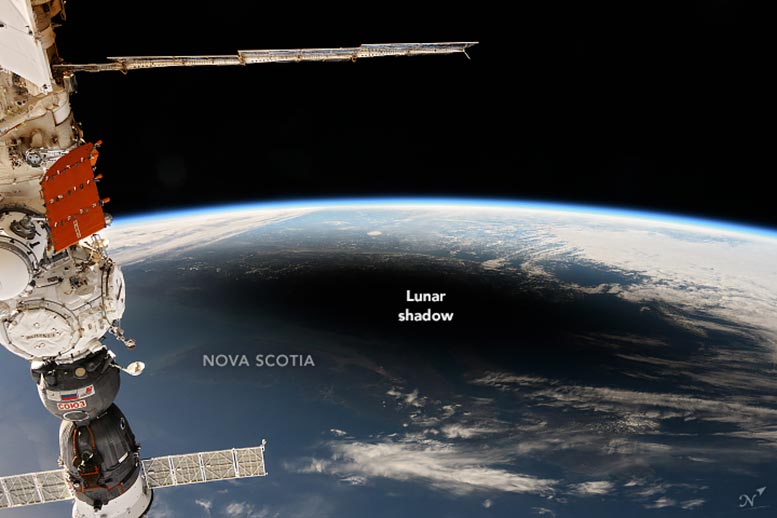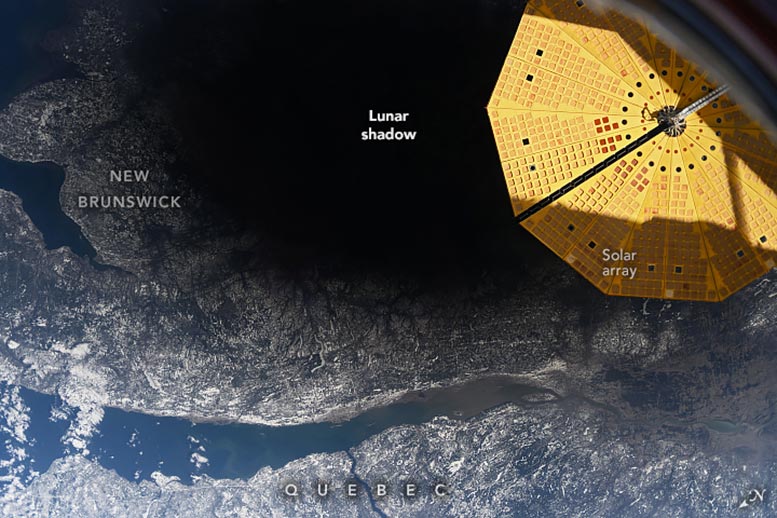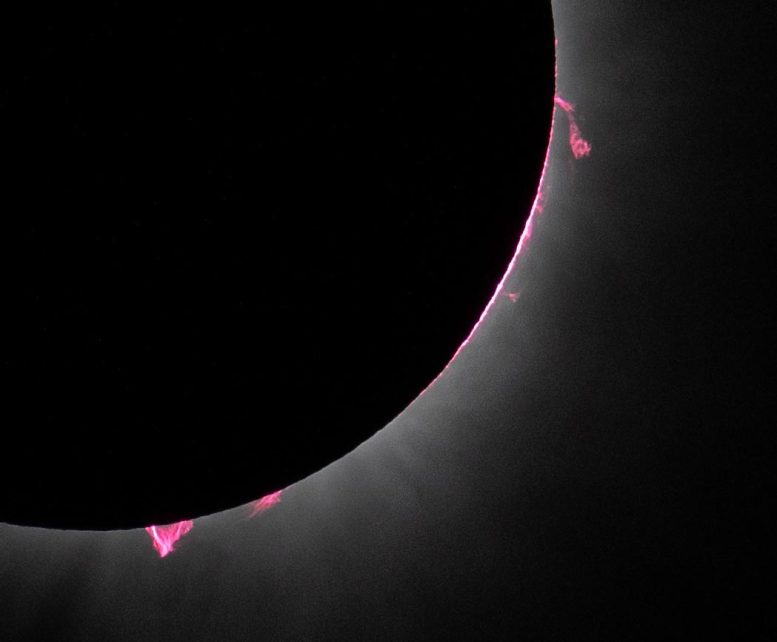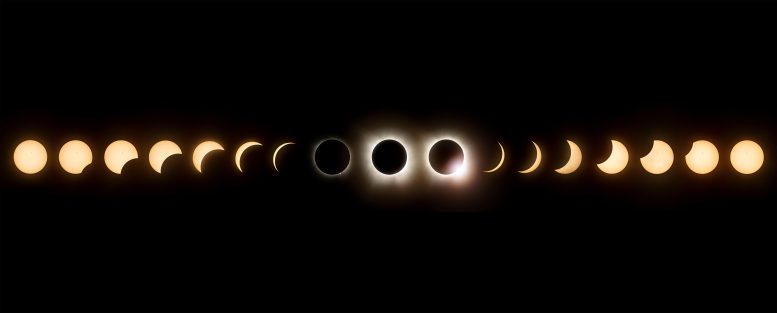
A stunning view of the April 8, 2024, solar eclipse photographed by an astronaut aboard the International Space Station.
Astronauts and photographers captured unforgettable views of Earth and the Sun as the Moon’s shadow swept across North America.
A total solar eclipse passed over parts of Mexico, the United States, and Canada on April 8, 2024. Millions of people witnessed skies darken as the Moon passed between Earth and the Sun, obscuring its bright light.
Astronauts aboard the International Space Station (ISS) got a top-down view of the Moon’s shadow as it traversed North America. The image above, taken as the space station orbited above the North Atlantic, shows the eclipse’s dark shadow along with Earth’s bright horizon, or limb, at the boundary between the atmosphere and space. A crew ship docked to the space station is visible in the lower-left corner of the image.
The photograph below, also taken by an astronaut, captures the Moon’s shadow as it darkened portions of Quebec and New Brunswick in Canada and Maine in the United States. The gold-colored feature in the upper-right corner is part of a solar array on a resupply spacecraft.

A photograph of the April 8, 2024, solar eclipse captured by an astronaut aboard the International Space Station as the moon darkened portions of Quebec and New Brunswick in Canada and Maine in the United States.
A total solar eclipse offers a unique opportunity to view and study the Sun’s active outer atmosphere, or corona. During totality, seen in the center of the composite photo below, the Moon perfectly blocks the bright face of the Sun, leaving the much dimmer solar corona visible. This composite was captured in Cleveland, Ohio, over the course of the approximately 2.5 hours it took for the Moon to move across the face of the Sun.
During totality, glowing loops of plasma called solar prominences could be seen extending into the corona. Plasma is super-hot ionized gas that flows along the tangled and twisted structure of the Sun’s magnetic fields. Some observers on the ground noticed spots of pink appearing within the corona’s light. The detailed photo below reveals that pink-tinged streamers were erupting into the corona.

Solar prominences are seen during a total solar eclipse in Dallas, Texas on Monday, April 8, 2024. A total solar eclipse swept across a narrow portion of the North American continent from Mexico’s Pacific coast to the Atlantic coast of Newfoundland, Canada. A partial solar eclipse was visible across the entire North American continent along with parts of Central America and Europe. Credit: NASA/Keegan Barber
At the time of the eclipse, the Sun was near a solar maximum, a period of heightened activity that occurs about every 11 years when the Sun’s magnetic field flips. The Sun’s activity was much different during the 2017 total solar eclipse. At that time, it was nearing a solar minimum. As a result, the magnetic field was less tangled then and streamers were restricted to the Sun’s equatorial region.
Astronaut photographs ISS071-E-003390 and ISS071-E-002856 were acquired on April 8, 2024, with a Nikon Z 9 digital camera using 28 and 24 millimeter lenses, respectively, and are provided by the ISS Crew Earth Observations Facility and the Earth Science and Remote Sensing Unit, Johnson Space Center. The images were taken by members of the Expedition 71 crew. The images have been cropped and enhanced to improve contrast, and lens artifacts have been removed. The International Space Station Program supports the laboratory as part of the ISS National Lab to help astronauts take pictures of Earth that will be of the greatest value to scientists and the public, and to make those images freely available on the Internet. Additional images taken by astronauts and cosmonauts can be viewed at the NASA/JSC Gateway to Astronaut Photography of Earth.
